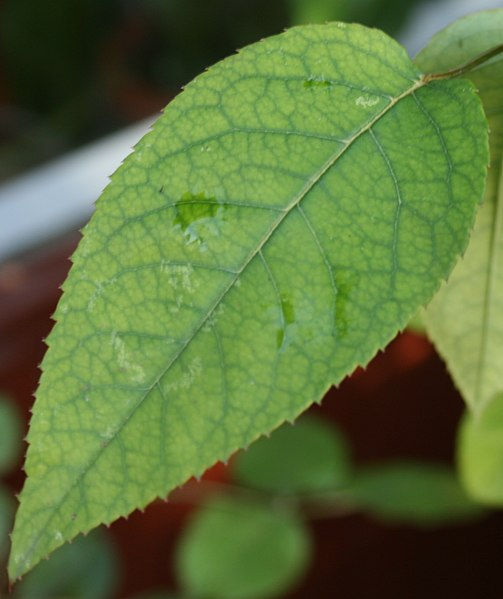The 21st century has given us a multitude of technological breakthroughs, but we are now seeing some of the negative consequences of those breakthroughs in the horticultural world. The overuse of inorganic fertilizers has created a global problem with the build-up of phosphorus in the soil, which has a detrimental effect on the soil pH (acidity/alkalinity) and thereby on the plants grown in those soils. The increase of atmospheric carbon dioxide along with the use of de-icing chemicals on our pavements has caused an increase in the incidence of certain plant problems and diseases.
Some species of trees are vulnerable to naturally-occurring maladies that have been accentuated by modern conditions. Oaks, especially the pin oaks (Quercus palustris), are prone to chlorosis. This is not a disease, but a condition cause by lack of the element iron. When iron is not available to the plant or is available in amounts below the threshold required to support photosynthesis, the foliage will exhibit a yellow appearance, with the veins of the leaves being green. This damaged foliage tends to burn, especially along the edges, during the hot days of summer. Unable to photosynthesize without iron, the tree will cease producing oxygen, which is one of the major advantages of cultivating trees. The continued over-application of phosphoric fertilizer and products high in phosphorus must be reduced, as the phosphorus ties up iron in the soil. If the soil condition is not corrected, the tree will die in five to seven years, sooner if other pollutants are present. Iron injection directly into the trunk of the tree will alleviate the problem but must be repeated yearly until the surrounding soil has been emended.

High levels of phosphorus in the soil ties up other trace minerals as well. Maple trees are prone to manganese deficiency, which looks a lot like iron deficiency from a distance. The foliage turns yellow, but the veining in the leaves is blue rather than green. Manganese deficiency also involves iron deficiency and can be caused by an excess of phosphorus in the soil. Direct injection and soil emendation can be used to treat this condition as well. Iron and manganese occur in highly calcareous soils (soils with high lime content, carrying a basic pH) but can be tied up by the calcium in the soil. Certain areas in Ohio have extensive limestone deposits, making it difficult to grow pin oaks and some varieties of maple, especially Norway maples. In some limestone areas, oaks and maples will still grow happily. If unsure about the possibility of limestone underlying the soil, choosing a different variety of oak would be prudent.
One of the strangest of maladies in plants is called “witch’s-broom.” Affecting many species of conifer as well as deciduous species, this condition describes a proliferation of shoots with short internodes that can look like a bundle of twigs or can even appear as a ball-shaped dwarf plant growing in a tree. (Interestingly, propagation of some witch’s-brooms in conifers has resulted in many dwarf cultivars.) Witch’s-brooms result when the terminal buds of shoots are killed by fungi, phytoplasmas (wall-less single-celled organisms with an unorganized nucleus), mite infection, dwarf mistletoe infestation or adverse environmental conditions such as highway salt spray resulting from de-icing during winter months. Witch’s-broom can be caused by powdery mildew in oaks and hackberry trees, by rust in incense cedar, and by a virus in rose rosette. Phytoplasma causes witch’s-broom and similar bunch disorders on pecan, hickory, lilac, walnut, willow, dogwood, ash, honey locust, peach, elm, juniper, fir, hemlock and pine. Control can be a lengthy process, as it requires the removal of the branches back beyond the offending brooms of infected trees or shrubs. This may take several years. Good husbandry will help – proactive control of pests and diseases, and alternative methods of de-icing highways.
When in doubt, ask a professional to look at your sick plants. While some conditions and diseases are incurable, many will respond to proper treatment. The first step is figuring out what is wrong!


コメント